To care for a newborn, parents have to buy a lot of things, the main purpose of which is to simplify the process of caring for the baby. Among these is a cocoon for newborns.
Cocoon-nest
The baby cocoon is essentially an orthopedic mattress that follows the shape of the baby's body. Its design is such that the baby can be in the same position in which it was in the mother's womb for nine months.
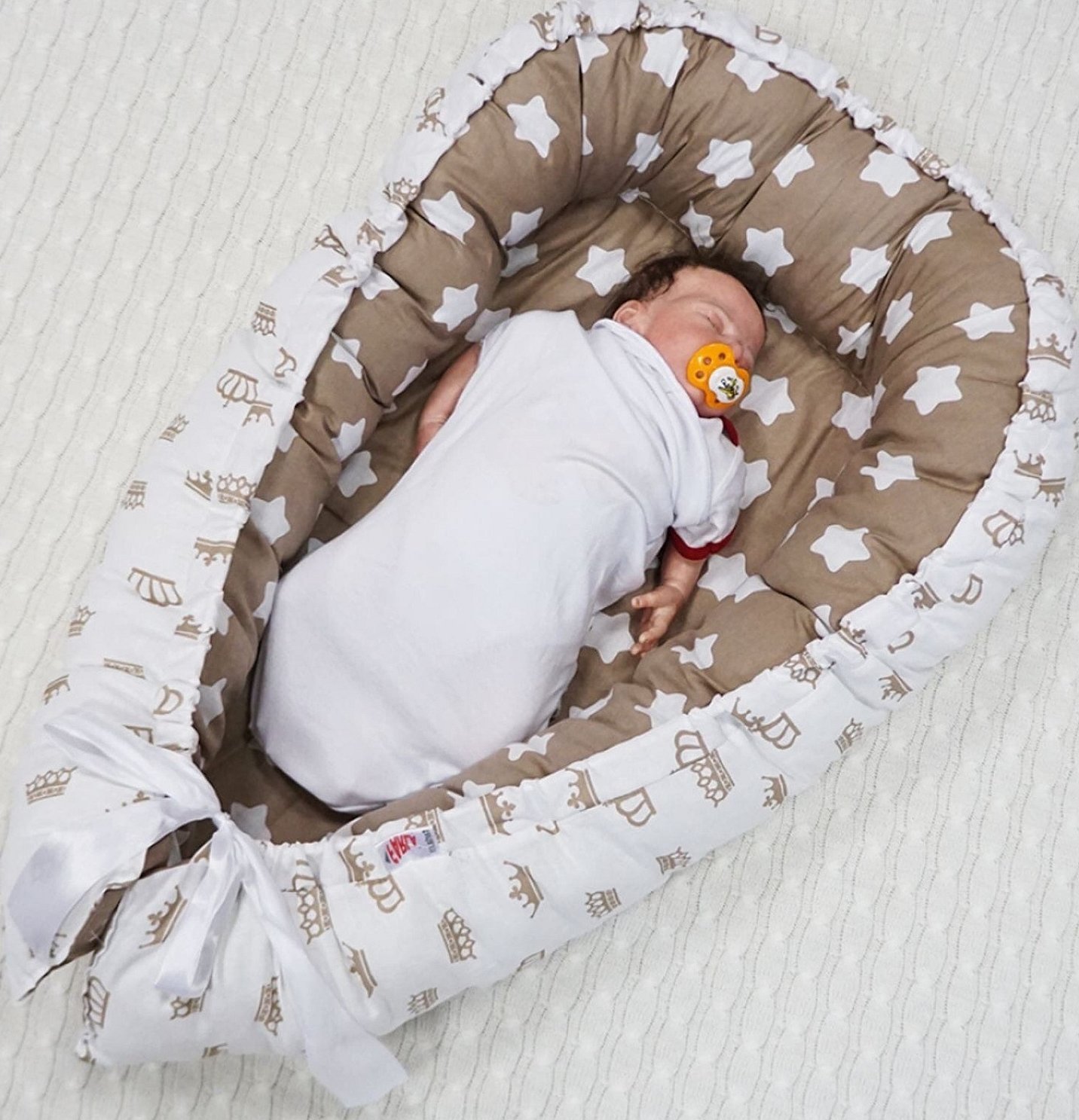
You can buy a ready-made cocoon, but many people sew a nest for newborns using a pattern. In any case, it is strongly recommended to take care of its availability in the household.
Experts claim that thanks to the cocoon, any baby adapts to the surrounding world much better and faster and begins to feel comfortable in it.
Diversity
Cocoons are available for sale in a wide range. Their most general classification is as follows.
· Pillow.
This type can be used from the very first days of a child’s life and not only for sleeping, but also for feeding and playing.

· Nest.
The nest looks most like a cradle. When choosing this type of cocoons for newborns, you should buy modifications with a strong bottom.
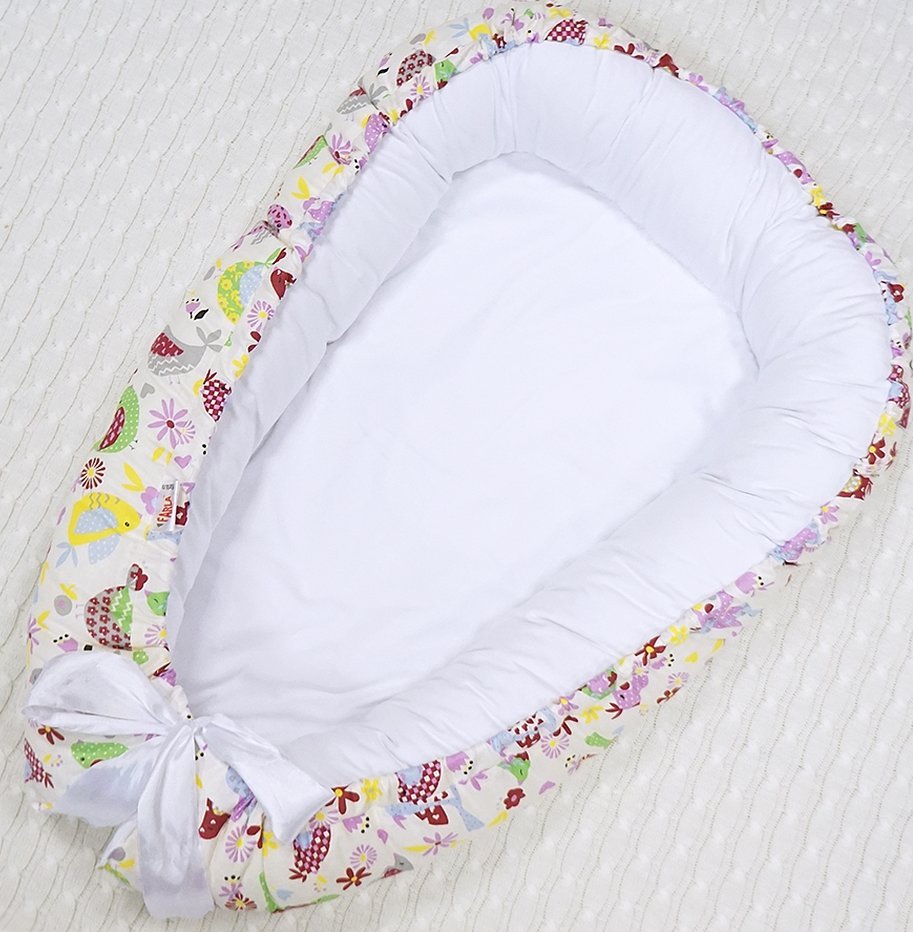
· Mattress.
The most common type. Often an anatomical mattress is placed in a baby's crib.
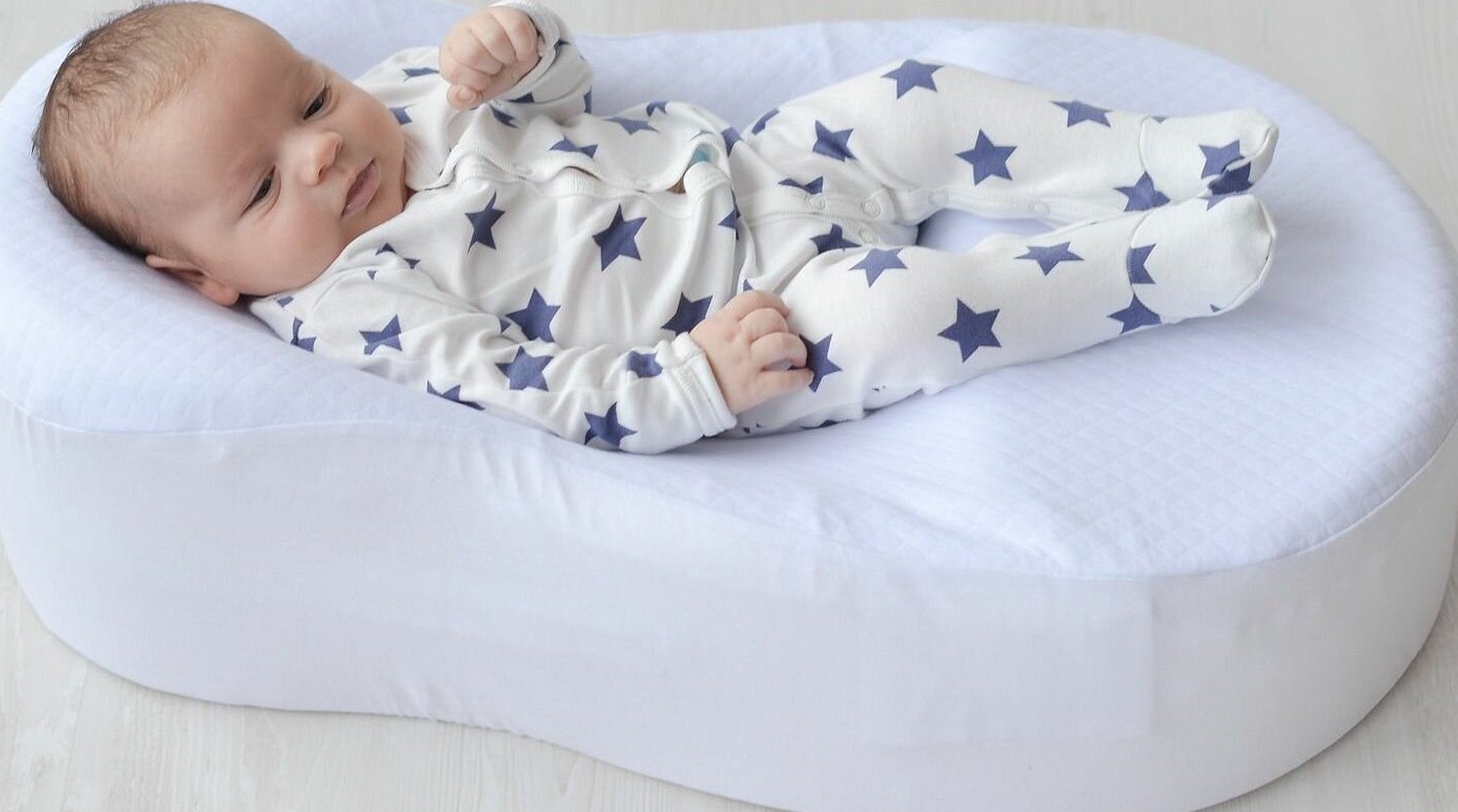
· Diaper.
There is a special pattern for a cocoon for a newborn of this type, which fully takes into account the features of the baby's body structure. Velcro is often used as fasteners, but you can also find models with zippers.

Universal diaper sizes by month
It is not difficult to sew or buy a cocoon for newborns with your own hands, but it is worth determining what size it should be. This type of product is divided into three age categories:
- from 0 to 3 months (size S for height 62 cm);
- from 3 to 6 months (size M for height 68 cm);
- from 6 months to a year (size L for height 74 cm).
The most popular diaper of this type is small and medium sizes. Most parents prefer to stop using cocoons when their baby reaches six months.
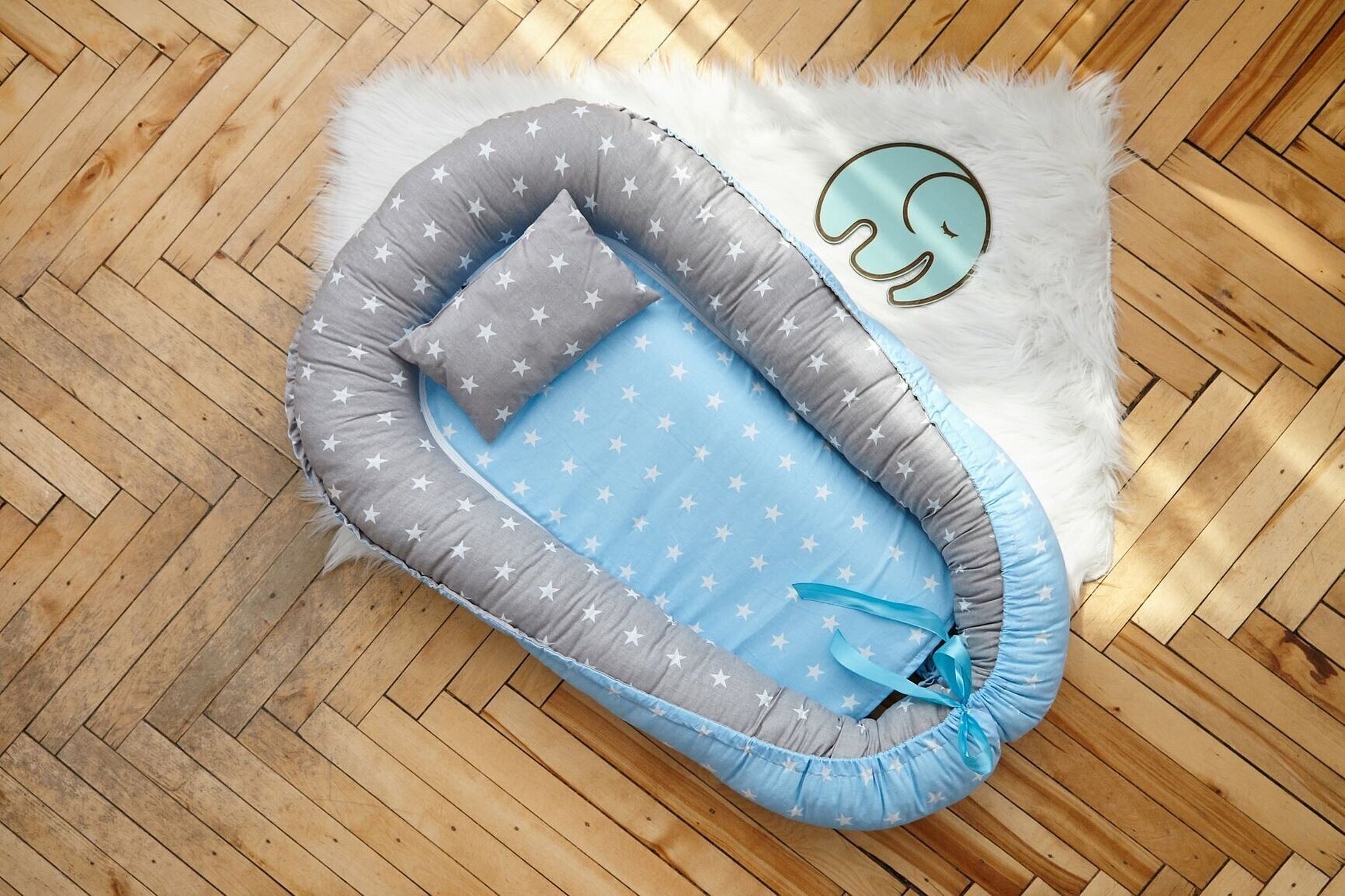
Important! It is highly recommended to sew or buy a diaper for growth in order to save money. It will not perform its main function - to provide the child with comfortable conditions during sleep and wakefulness.
Choosing materials for diapers
Having decided to sew a cocoon for newborns with your own hands according to the master class, it is strongly recommended to thoroughly approach the choice of material.
When choosing fabric for sewing a cocoon diaper, you should pay attention to the following points:
- quality;
- naturalness;
- the ability of the fabric to allow air to pass through well;
- good moisture absorption;
- softness;
- strength;
- hypoallergenic.
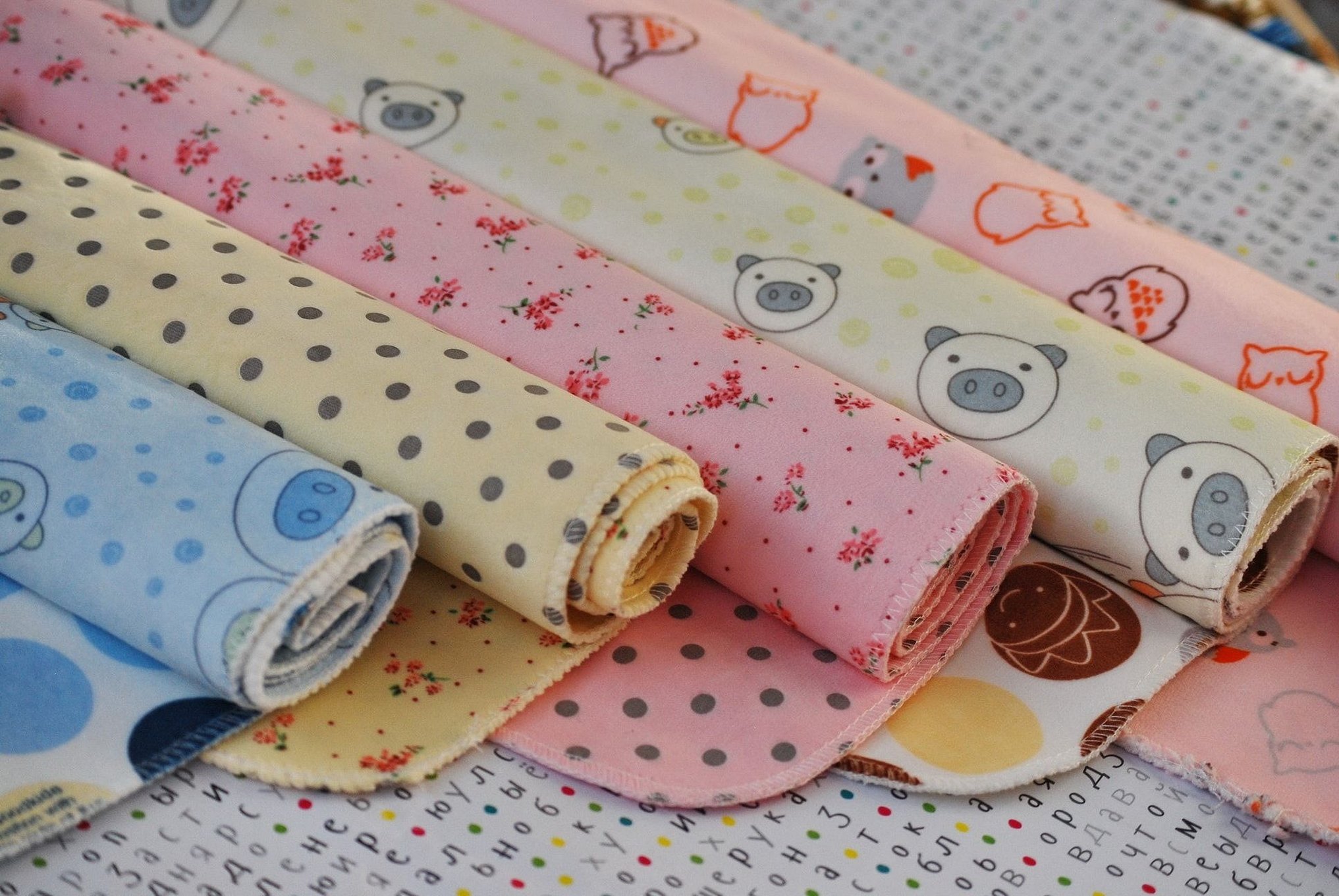
These criteria are met by chintz, flannel, cambric, jersey and footer. It is these fabrics that are best suited for sewing a diaper.
Important! When buying fabric, you should not fully trust the information on the composition indicated on the label. This data does not always correspond to reality. In this regard, it is recommended to buy the material in trusted places and not try to save on this expense item.
Materials and tools for work
Any instruction on sewing a cocoon begins with a list of materials and tools needed for the job.
The materials required are:
- 2 pieces of fabric measuring 80×100 or 80×110 cm;
- about 3 meters of cord (can be replaced with satin ribbon or bias tape);
- about 1 meter of bias tape in the same color as the main fabric;
- lace (optional);
- foam rubber measuring 70×40 and 2 cm thick (can be replaced with rolled synthetic padding with similar parameters);
- threads.

The tools you will need are:
- paper (for transferring the pattern);
- measuring tape;
- pattern;
- pen, chalk or pencil;
- scissors;
- awl;
- safety pin;
- tailor's pin;
- basting needle;
- sewing machine;
- iron.
But the most important thing, without which you shouldn't even start working, is a template or a pattern, according to which the pattern will be made and, in fact, the product will be sewn. If you have certain knowledge and experience, you can make the pattern yourself or find it on one of the many websites on the Internet.
Master class on sewing
It is not easy to answer the question of how best to sew a cocoon nest for a newborn, but it is quite possible to provide a step-by-step master class demonstrating everything in maximum detail.
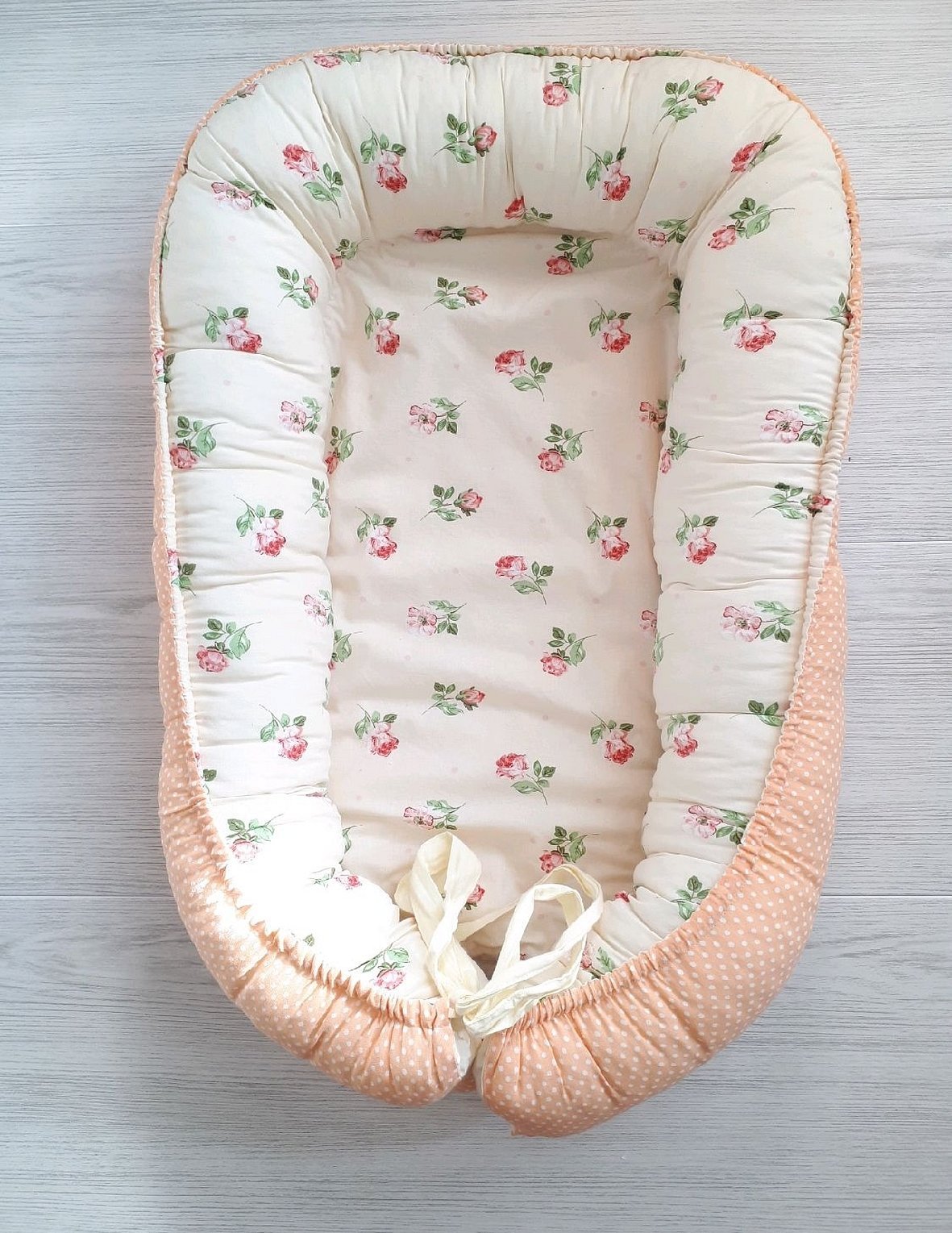
In stores, prices for cocoons for newborns are not the lowest, so many mothers who are not strangers to needlework prefer to sew the product with their own hands. A homemade cocoon is no worse.
Sewing involves the following list of works:
- Two identical pieces are cut out of the fabric according to the pattern.
- The pieces are placed one on top of the other with the right sides facing inward.
- Pin the edges and stitch. The bottom part of the product does not need to be sewn.
- The future nest is turned inside out and ironed.
- Step back 2 cm from the edge and make a second machine stitch. A ribbon or cord will be inserted into the resulting hole.
- Cut out the middle part of the pattern, transfer it to the fabric and cut out the next piece.
- Place it in the center of the sewn nest and stitch it on the machine.
- Cut out a similar piece from synthetic padding.
- They insert it inside.
- Stepping back from the edge by the same 2 cm, use pins to connect the three layers (two layers of fabric and one layer of synthetic padding).
- Stitch on the machine, leaving the very edge about 2 or 3 cm for subsequent hemming. It is recommended to stitch the mattress in several more places so that the filler fits as firmly as possible.
- The ribbon is inserted using a pin.
- The side is filled with holofiber.
- The back part is sewn up.
- The ribbon is tied by pulling up the side edges.
- The result is a cute cocoon for a newborn.
How to knit a cocoon
Cocoons can not only be sewn, but also crocheted or knitted. The envelope itself is not only an excellent alternative to swaddling, but also additionally warms the baby.
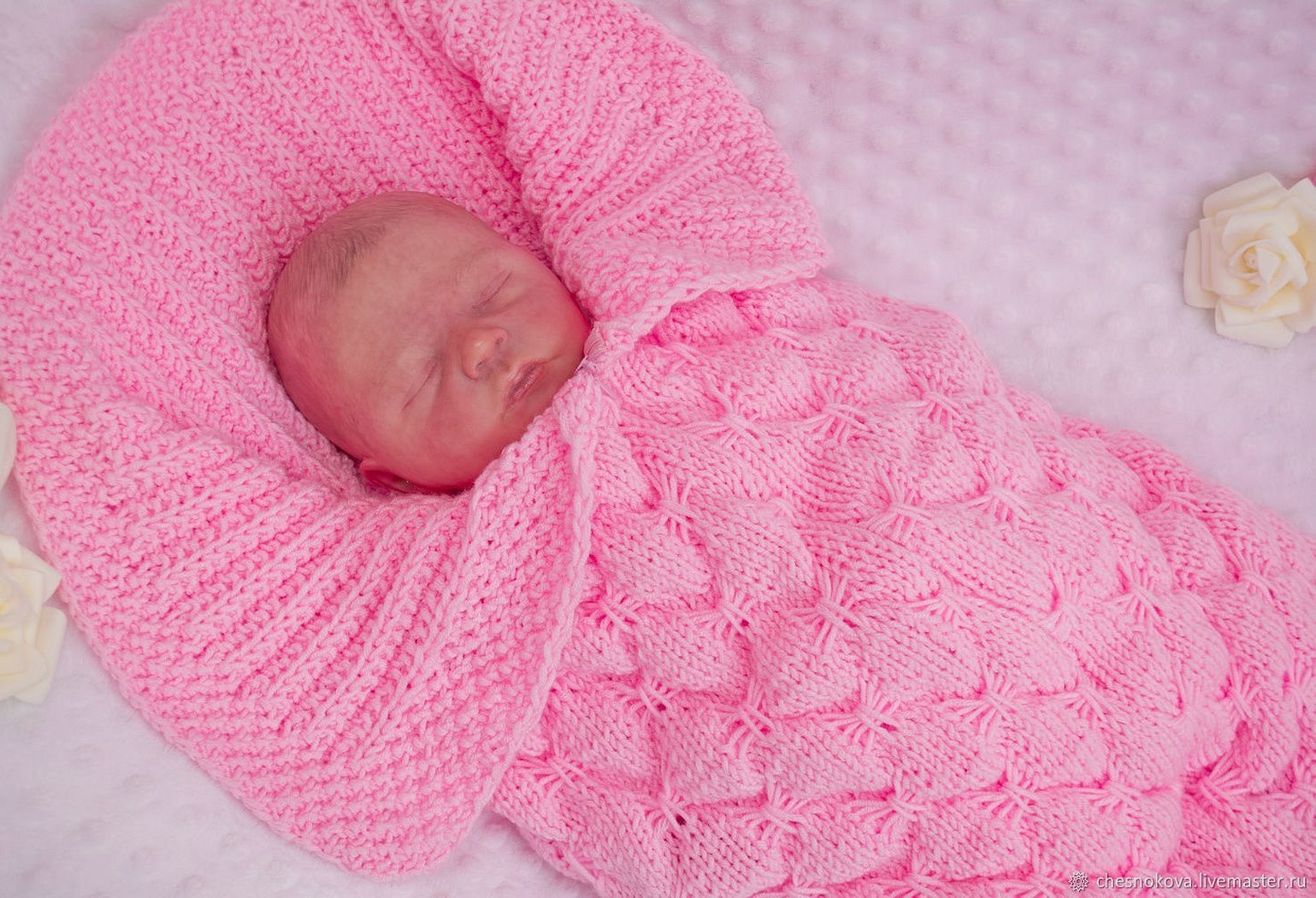
You can knit a product of any size. Just like with sewn nests, you should use natural and high-quality materials for knitting. You can find a huge number of master classes on knitting with both hooks and knitting needles on the Internet. So there is no particular point in giving step-by-step instructions. If desired, in addition to the envelope, you can knit a hat or an original hood. It is very easy to knit a new thing for a baby - all movements are performed exclusively in a circle. Socks and hats are knitted in the same way. You will only need to provide a small allowance in the upper part of the product, since the knitted material is very elastic.
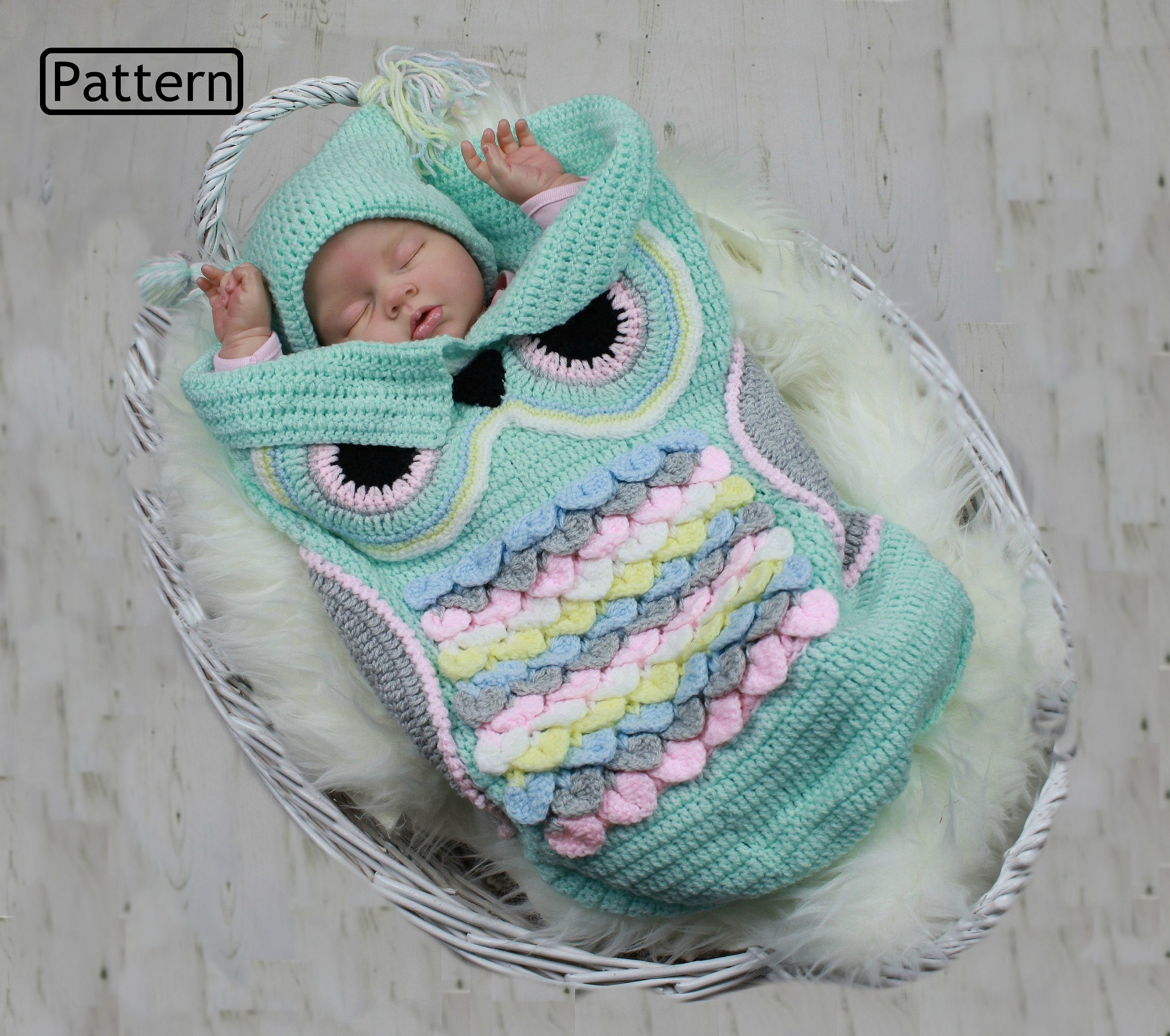
Knitted cocoons are very convenient to use. In order to place a child in it, just a couple of simple movements are enough. Such a nest becomes especially relevant in the winter period. The envelope is quite capable of replacing a huge amount of clothing in which a child is wrapped for warmth.
Advantages and disadvantages of self-sewing
You can stand for a long time in front of a display case with cocoons for newborns, but regret the money and leave with nothing. But this does not mean that you should completely abandon such a product. Moreover, sewing a cocoon envelope yourself will not present any particular difficulties. Sewing a nest yourself has undeniable advantages:
- the ability to independently choose the fabric with its characteristics, colors, patterns and models;
- saving money - a homemade option, even taking into account the purchase of materials and tools, will be cheaper;
- the ability to adjust any nuances during the sewing process.
There are also some minor disadvantages. First of all, we are talking about time costs. This process, although relatively simple, is labor-intensive. At best, it will take a couple of days just to sew or knit. And you will also need to go shopping in search of materials. It is also worth remembering that many people simply do not know how to sew or knit, and when they start making a new thing for a baby on their own, they risk wasting time, money and effort.
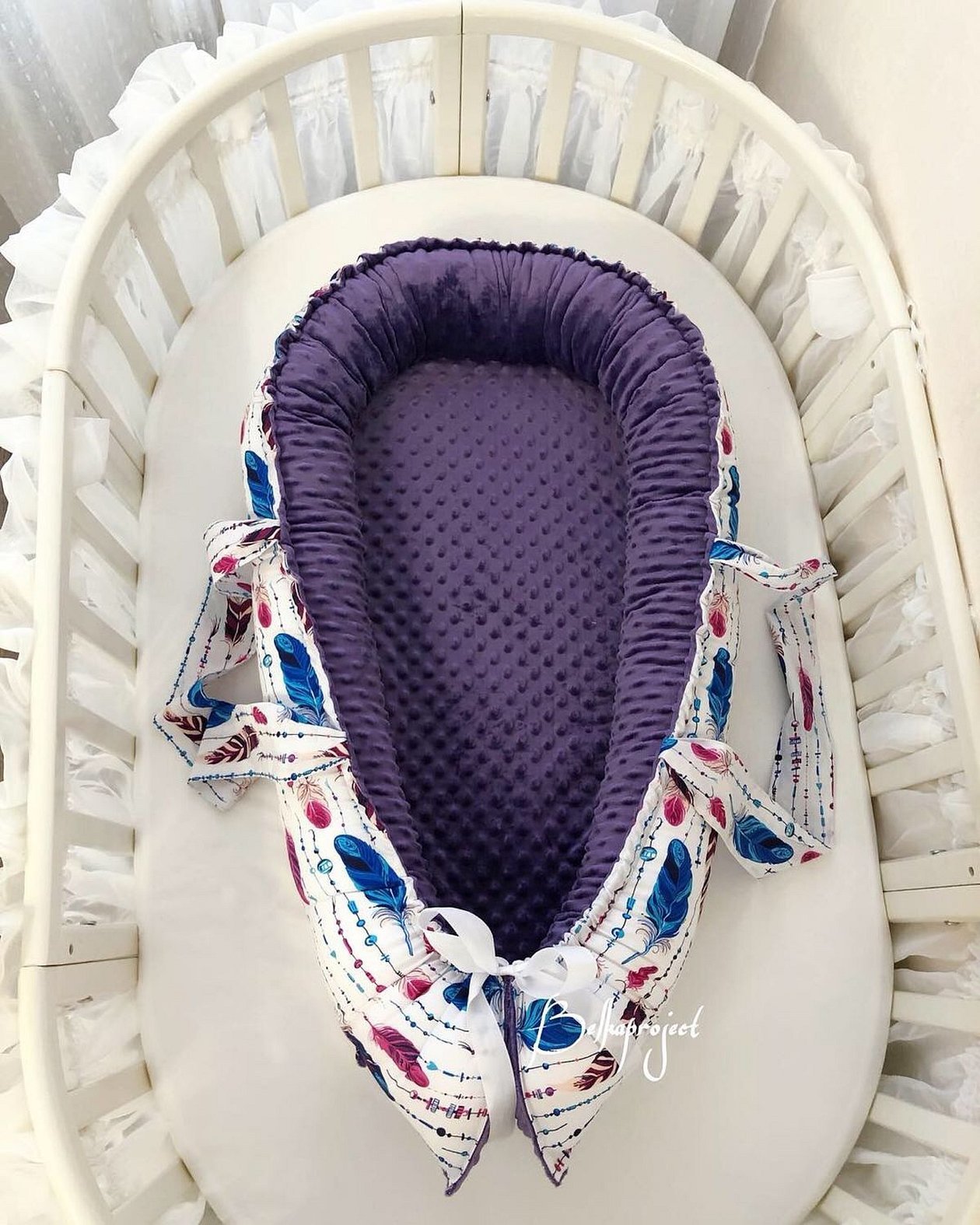
In general, a cocoon for a baby is an excellent invention, which many parents have already managed to appreciate. Considering that the answer to the question of how to sew a cocoon nest for a newborn with your own hands is not difficult to find, there is an opportunity to check the convenience of this invention on your own experience.




